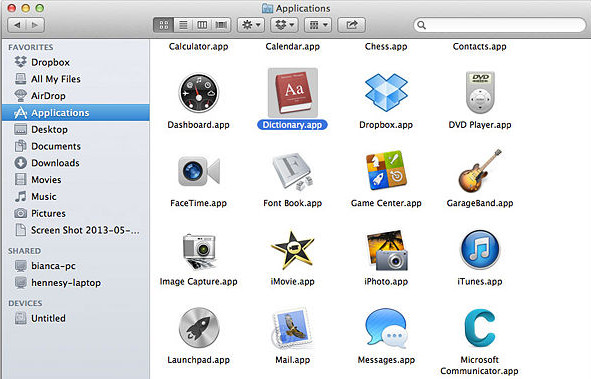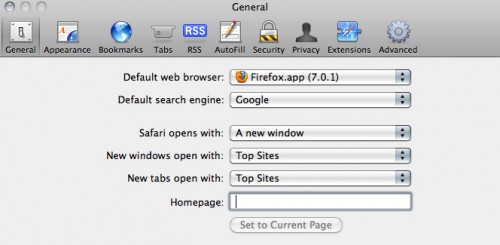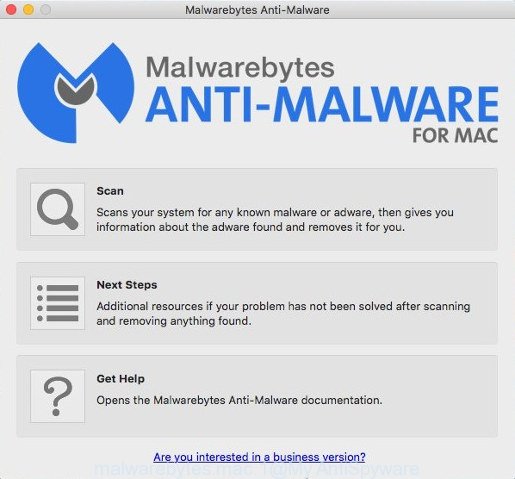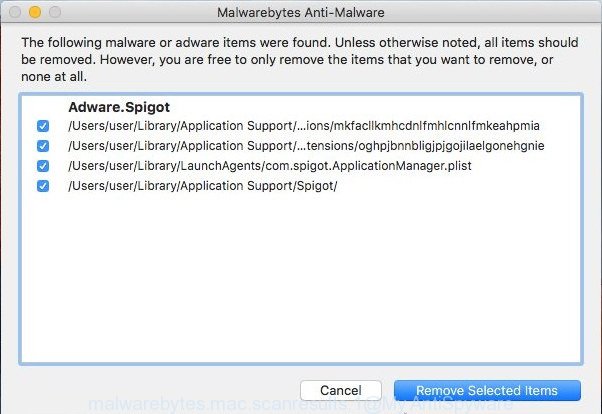According to security researchers, ProgressExpert is a potentially unwanted program (PUP) that belongs to the category of Adware. What is Adware? Adware can cause problems for your MAC. The ProgressExpert adware can display unwanted advertising on your web browser so that your cannot stop them, redirect your browser to misleading web-sites, and it can cause unwanted web-pages to pop up on your web browser. Adware might end up on your machine after you download and install free applications from a suspicious web site.

Unwanted ads
Does adware steal your confidential information? The ProgressExpert adware can be used to collect lots of user info to get profit. Adware can analyze your browsing, and gain access to your personal data and, afterwards, can transfer it third party companies. Thus, there are more than enough reasons to delete adware from your Apple Mac.
Threat Summary
| Name | ProgressExpert, Progress Expert 1.0 app |
| Type | adware, potentially unwanted application (PUA), popups, pop-up virus, pop up ads |
| Symptoms |
|
| Removal | ProgressExpert removal guide |
How does the ProgressExpert adware get on your MAC
Adware usually come along with another app in the same installation package. The risk of this is especially high for the various free software downloaded from the Web. The creators of the applications are hoping that users will use the quick install type, that is simply to press the Next button, without paying attention to the information on the screen and do not carefully considering every step of the installation procedure. Thus, adware can infiltrate your MAC without your knowledge. Therefore, it’s very important to read all the information that tells the application during installation, including the ‘Terms of Use’ and ‘Software license’. Use only the Manual, Custom or Advanced setup option. This mode will help you to disable all optional and unwanted apps and components.
If your web-browser has been infected with the adware, you must have complete any of the steps below. Once you’ve removed ProgressExpert from your Apple Mac by following our few simple steps below, make sure not to commit the same mistakes again in the future.
How to Remove ProgressExpert adware (removal instructions)
Even if you have the up-to-date classic antivirus for Mac OS installed, and you have checked your Apple Mac for malware and removed anything found, you need to do the tutorial below. The ProgressExpert adware software removal is not simple as installing another antivirus. Classic antivirus applications are not created to run together and will conflict with each other, or possibly crash Apple Mac. Instead we suggest complete the manual steps below after that run MalwareBytes, which is a free program dedicated to scan for and delete ProgressExpert adware software. Use the utility to ensure the adware is removed.
To remove ProgressExpert, execute the steps below:
- Manual ProgressExpert adware removal
- Automatic Removal of ProgressExpert
- How to stay safe online
- To sum up
Manual ProgressExpert adware removal
In most cases, it’s possible to manually remove ProgressExpert adware. This method does not involve the use of any tricks or removal tools. You just need to restore the normal settings of the MAC and browser. This can be done by following a few simple steps below. If you want to quickly get rid of ProgressExpert adware, as well as perform a full scan of your MAC, we recommend that you run adware removal tools, which are listed below.
Delete questionable applications using the Finder
Check out the Finder (Applications section) to see all installed software. If you see any unknown and suspicious programs, they are the ones you need to delete.
Open Finder and click “Applications”.

It will display a list of all apps installed on your computer. Scroll through the all list, and uninstall any dubious and unknown programs. Right click to questionable application and select “Move to Trash”. Another method is drag the program from the Applications folder to the Trash.
Most important, scroll through the all list, and move to trash any unknown applications. Don’t forget, choose Finder -> Empty Trash.
Remove ProgressExpert adware from Chrome
If your Google Chrome web browser is affected by the ProgressExpert adware, it may be necessary to completely reset your internet browser application to its default settings.
First open the Google Chrome. Next, click the button in the form of three horizontal dots (![]() ).
).
It will open the Chrome menu. Select More Tools, then click Extensions. Carefully browse through the list of installed extensions. If the list has the plugin signed with “Installed by enterprise policy” or “Installed by your administrator”, then complete the following tutorial: Remove Google Chrome extensions installed by enterprise policy.
Open the Chrome menu once again. Further, click the option called “Settings”.

The web-browser will display the settings screen. Another way to display the Chrome’s settings – type chrome://settings in the web browser adress bar and press Enter
Scroll down to the bottom of the page and click the “Advanced” link. Now scroll down until the “Reset” section is visible, as on the image below and click the “Reset settings to their original defaults” button.

The Chrome will show the confirmation dialog box as displayed on the image below.

You need to confirm your action, click the “Reset” button. The web browser will run the process of cleaning. After it’s finished, the web browser’s settings including new tab, search engine by default and start page back to the values which have been when the Google Chrome was first installed on your Apple Mac.
Delete ProgressExpert adware from Safari
If you find that Safari browser settings like homepage, search provider and new tab having been replaced by the ProgressExpert adware, then you may restore your settings, via the reset internet browser procedure.
Click Safari menu and select “Preferences”.

It will open the Safari Preferences window. Next, click the “Extensions” tab. Look for unknown and suspicious plugins on left panel, select it, then press the “Uninstall” button. Most important to remove all unknown extensions from Safari.
Once complete, click “General” tab. Change the “Default Search Engine” to Google.

Find the “Homepage” and type into textfield “https://www.google.com”.
Remove ProgressExpert from Firefox by resetting browser settings
Resetting your Mozilla Firefox is first troubleshooting step for any issues with your web browser program. Your saved bookmarks, form auto-fill information and passwords won’t be cleared or changed.
First, open the Mozilla Firefox. Next, click the button in the form of three horizontal stripes (![]() ). It will show the drop-down menu. Next, click the Help button (
). It will show the drop-down menu. Next, click the Help button (![]() ).
).

In the Help menu click the “Troubleshooting Information”. In the upper-right corner of the “Troubleshooting Information” page click on “Refresh Firefox” button as shown in the figure below.

Confirm your action, press the “Refresh Firefox”.
Automatic Removal of ProgressExpert
If you’re unsure how to delete ProgressExpert easily, consider using automatic adware removal programs which listed below. It will identify the ProgressExpert adware and remove it from your MAC OS for free.
Run MalwareBytes AntiMalware to remove ProgressExpert adware
Remove ProgressExpert manually is difficult and often the adware software is not fully removed. Therefore, we recommend you to run the MalwareBytes Free that are completely clean your MAC. Moreover, this free program will allow you to get rid of malware, PUPs, toolbars and hijacker that your Apple Mac can be infected too.
Installing the MalwareBytes Anti Malware (MBAM) is simple. First you will need to download MalwareBytes Anti Malware on your MS Windows Desktop by clicking on the following link.
21176 downloads
Author: Malwarebytes
Category: Security tools
Update: September 10, 2020
Once the download is complete, close all apps and windows on your MAC OS. Open a directory in which you saved it. Run the saved file and follow the prompts.
Once setup is done, you’ll see window as displayed in the following example.

Now click the “Scan” button to look for ProgressExpert adware. Depending on your MAC, the scan may take anywhere from a few minutes to close to an hour. While the MalwareBytes AntiMalware (MBAM) program is checking, you can see count of objects it has identified as threat.

After MalwareBytes Free has completed scanning, the results are displayed in the scan report. Review the results once the tool has finished the system scan. If you think an entry should not be quarantined, then uncheck it. Otherwise, simply click “Remove Selected Items” button.

The Malwarebytes will now delete ProgressExpert and move the selected items to the Quarantine.
How to stay safe online
We suggest to install an ad blocker application that can stop misleading and other unwanted web sites. The ad-blocking tool such as AdGuard is a program that basically removes advertising from the World Wide Web and blocks access to malicious web-pages. Moreover, security experts says that using ad blocking applications is necessary to stay safe when surfing the Net.

Download AdGuard on your MAC OS by clicking on the following link.
3891 downloads
Author: © Adguard
Category: Security tools
Update: January 17, 2018
Once downloading is finished, run the downloaded file. The “Setup Wizard” window will show up on the computer screen.
Follow the prompts. AdGuard will then be installed. A window will show up asking you to confirm that you want to see a quick instructions. Press “Skip” button to close the window and use the default settings, or press “Get Started” to see an quick guidance that will help you get to know AdGuard better.
Each time, when you launch your MAC system, AdGuard will run automatically and stop unwanted popup ads, block harmful and misleading webpages.
To sum up
After completing the step-by-step tutorial above, your machine should be clean from the ProgressExpert adware and other malware. The Safari, Firefox and Chrome will no longer display the ProgressExpert ads. Unfortunately, if the few simple steps does not help you, then you have caught a new adware, and then the best way – ask for help here.


















